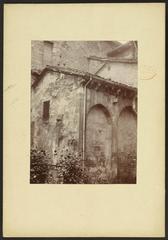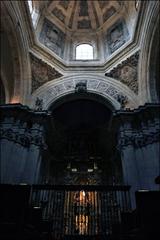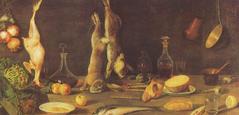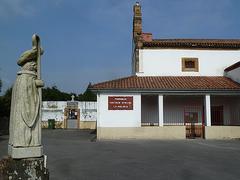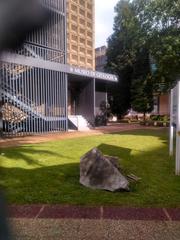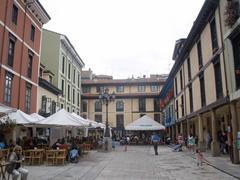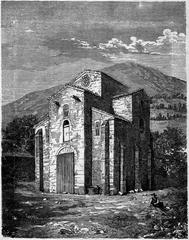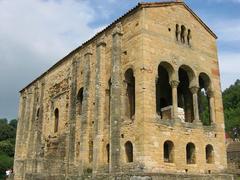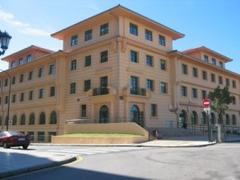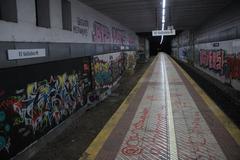
Comprehensive Guide to Visiting Oviedo City, Uviéu, Spain
Published Date: 13/08/2024
Captivating Introduction
Welcome to Oviedo, also known as Uviéu in the Asturian tongue—a city where history, culture, and modern charm seamlessly blend. Nestled in the heart of the Asturias region in northern Spain, Oviedo is a treasure trove waiting to be explored. Founded in 761 AD by two monks, Máximo and Fromestano, this city has evolved from a humble monastic settlement into a vibrant cultural hub (Go Ask a Local). Oviedo’s history is as rich as its landscapes, marked by its declaration as the capital of the Kingdom of Asturias in 791 AD by King Alfonso II. Imagine walking through streets that have witnessed the rise and fall of empires, where medieval architecture stands shoulder to shoulder with modern urban planning (Spain This Way). But Oviedo is not just about its storied past; it’s also a city of hidden gems and quirky local customs. From the artful pouring of cider known as ‘escanciado’ to the melodic tunes of Asturian bagpipes wafting through the air, every corner of this city is a sensory delight (Nomads Travel Guide). So, whether you’re a history buff, a foodie, or an adventurer, Oviedo has something special in store for you. Ready to dive into this enchanting city? Let’s embark on a journey that promises to be as captivating as it is educational.
Table of Contents
- Historical Overview
- Significance and Cultural Heritage
- Visitor Tips
- Call to Action
Historical Overview
Unveiling Oviedo: Where History Meets Charm
Nestled in the heart of Asturias, Oviedo, or Uviéu in Asturian, is a city drenched in history and brimming with charm. Imagine stepping back to 761 AD, when two monks, Máximo and Fromestano, founded a humble monastic settlement on Mount Ovetao, setting the stage for Oviedo’s enchanting tale. This city, with its natural fortifications provided by the Cantabrian Mountains, was destined to become a haven of culture and religion (Go Ask a Local).
The Crown Jewel of Asturias
Fast forward to 791 AD, and King Alfonso II declared Oviedo the capital of the Kingdom of Asturias. Picture the original San Salvador Cathedral standing as a beacon of Christian resilience against the Moors. Pilgrims flocked to this spiritual bastion, enriching the city’s coffers and spirit (Go Ask a Local).
Medieval Magic and Architectural Wonders
The medieval era saw Oviedo blossom architecturally and culturally. The 9th-century Cámara Santa, housing sacred relics like the Holy Chest and the Cross of the Angels, underscored Oviedo’s spiritual significance. Wander through the UNESCO-listed pre-Romanesque churches, Santa María del Naranco and San Miguel de Lillo, and feel the whispers of history (Spain This Way).
Renaissance Splendor and Academic Ascent
The Renaissance and Baroque periods adorned Oviedo with palaces and civic buildings that still stand proudly today. The Gothic Cathedral of San Salvador was largely remodeled in the 12th century, and in 1608, the University of Oviedo was founded, enhancing the city’s intellectual and cultural landscape (Spain This Way).
The Industrial Age: Growth and Strife
The 19th century’s Industrial Revolution brought both prosperity and challenges to Oviedo. The city burst beyond its medieval confines, new neighborhoods sprang up, and the economy surged. However, this growth wasn’t without its trials, as social unrest and labor strikes punctuated this era of transformation (Go Ask a Local).
War and Resilience
Oviedo bore the brunt of the Spanish Civil War (1936-1939), suffering extensive bombardment. Yet, the post-war reconstruction highlighted the resilience of its people, determined to restore their city. Today, these scars are a testament to Oviedo’s enduring spirit (Go Ask a Local).
Modern-Day Oviedo: A Blend of Past and Present
Contemporary Oviedo is a vibrant blend of historical depth and modern charm. Its pedestrianized old quarter, with meticulously preserved buildings, invites you to stroll through history. Renowned for its cleanliness, Oviedo has earned accolades as Spain’s cleanest city. A thriving cultural scene, punctuated by museums, theaters, and festivals, keeps the city’s heritage alive (Go Ask a Local).
Significance and Cultural Heritage
A City Steeped in History
Ever wondered about a city that’s been a royal capital, a religious sanctuary, and a cultural beacon all at once? Welcome to Oviedo, or Uviéu in the Asturian tongue, a city founded in 761 AD by two visionary monks, Máximo and Fromestano. Imagine the hustle and bustle as it quickly rose to prominence, becoming the heart of the Kingdom of Asturias under King Fruela I by the late 8th century. Picture knights, monks, and merchants weaving through its streets, each contributing to the rich tapestry of its historical significance (Nomads Travel Guide).
Architectural Wonders: A Stroll Through Time
Oviedo’s architectural marvels are like a treasure hunt for history enthusiasts. The city is famed for its pre-Romanesque gems, with UNESCO World Heritage Sites like Santa María del Naranco, San Miguel de Lillo, and San Julián de los Prados. These ancient structures stand as testaments to the city’s rich past (Spain.info). The Oviedo Cathedral, a Gothic masterpiece constructed over centuries, with its 82-meter-high tower, symbolizes spiritual grandeur. Inside the Holy Chamber, relics like the Cross of the Angels and the Cross of Victory whisper tales of faith and history (PlanetWare).
A Cultural Canvas
Oviedo is a vibrant canvas painted with cultural events and festivals. The Princess of Asturias Awards Ceremony, for instance, is a grand affair that celebrates global contributions to the arts, sciences, and humanities (Turismo Asturias). Imagine attending this prestigious event at the Campoamor Theater, surrounded by the elegance of early 20th-century architecture. For music and art lovers, the Principe Felipe Auditorium is a haven, offering a plethora of concerts, theater performances, and dance shows (Voyage Leisure).
A Feast for the Senses
Oviedo’s gastronomy is a delightful journey through Asturian culinary traditions. Savor the robust flavors of Fabada Asturiana, the tender Pitu de Caleya, and the pungent Cabrales cheese. And don’t miss the unique experience of sipping traditional Asturian cider, poured from a height for that perfect aeration (Nomads Travel Guide).
Art in Every Corner
The cityscape of Oviedo is an open-air gallery. The Route of Sculptures features hundreds of artworks, from the whimsical to the profound, scattered throughout its streets and parks.
Visitor Tips
Best Time to Visit
Oviedo is a nearly year-round destination, but the best times to visit are spring, summer, and autumn. The weather is generally pleasant during these seasons, making it ideal for exploring the city’s outdoor attractions. Summer in Oviedo is particularly enjoyable as it is cooler compared to the southern parts of Spain, and the city is not overly crowded (Dan Flying Solo). However, it is advisable to avoid winter due to frequent showers, which can hinder outdoor activities.
Accommodation
Oviedo offers a range of accommodation options to suit different budgets. For mid-range stays, consider hotels like Ayre Hotel Oviedo, which is known for its modern architecture and comfortable amenities. For a more luxurious experience, the Hotel de la Reconquista, housed in a historic building, offers a blend of elegance and comfort (Dan Flying Solo).
Getting Around
Oviedo is one of the most pedestrian-friendly cities in Europe, with a largely pedestrianized city center. Walking is the best way to explore the city’s historic sites, parks, and statues. Public transportation, including buses, is also available for longer distances. For trips outside the city, renting a car is recommended, especially if you plan to visit nearby natural attractions like the Picos de Europa National Park (Travel Snippet).
Key Attractions
Historical Sites
- Catedral de San Salvador: This Gothic cathedral, built between the 13th and 18th centuries, is a must-visit. It houses the Cámara Santa, a chapel built by Alfonso II in 802 to guard Christian relics (Lonely Planet).
- Palacio de Santa María del Naranco: Located 3.5 km northwest of central Oviedo, this pre-Romanesque palace offers stunning views and historical significance (Lonely Planet).
- Iglesia de San Miguel de Lillo: Another pre-Romanesque gem, this 9th-century church is also situated on Monte Naranco (Lonely Planet).
Museums
- Museo de Bellas Artes de Asturias: This fine arts museum boasts a collection of around 15,000 pieces, making it one of Spain’s best regional museums (Dan Flying Solo).
- Museo Arqueológico de Asturias: Housed in a restored 16th-century monastery, this museum offers insights into the region’s archaeological history (Lonely Planet).
Cultural Experiences
Local Cuisine
Oviedo is renowned for its culinary delights. Don’t miss trying the local dishes such as fabada asturiana (a hearty bean stew) and cachopo (breaded veal or beef filled with ham and cheese). The city is also famous for its cider, with numerous sidrerías (cider houses) where you can enjoy this traditional drink (Dan Flying Solo).
Festivals and Events
- San Mateo Festival: Held in September, this is one of Oviedo’s most significant festivals, featuring music, parades, and traditional Asturian activities.
- La Ascensión: Celebrated in May, this festival showcases rural traditions, including livestock fairs and local produce markets.
Outdoor Activities
Parks and Nature
- San Francisco Park: Located in the city center, this park is perfect for a leisurely stroll. It is home to the beloved statue of Mafalda, an Argentinian cartoon character (Dan Flying Solo).
- Las Ubiñas-La Mesa Nature Park: For those who love hiking, this park offers jagged peaks, incredible panoramas, and pristine habitats. It is accessible by car or bus from Oviedo (Dan Flying Solo).
Day Trips
- Picos de Europa National Park: Although a bit far for a day trip, guided tours to this rugged mountain range are available. The park is one of the most impressive in Europe and offers breathtaking landscapes (Dan Flying Solo).
Practical Tips
Language
While Spanish is the official language, many locals speak Asturian, a regional language. English is not widely spoken, so learning a few basic Spanish phrases can be helpful.
Currency and Payments
The currency used is the Euro (€). Credit and debit cards are widely accepted, but it’s advisable to carry some cash for smaller establishments and markets.
Safety
Oviedo is considered one of the safest cities in Spain. However, like any other tourist destination, it’s essential to stay vigilant, especially in crowded areas.
Health and Emergency Services
Oviedo has excellent healthcare facilities. In case of emergencies, dial 112 for immediate assistance. Pharmacies are plentiful and can provide over-the-counter medications for minor ailments.
Shopping
Local Markets
- El Fontán Market: This market is perfect for buying local produce, cheeses, and souvenirs. It’s also a great place to experience the local culture and interact with residents (Dan Flying Solo).
Specialty Shops
- Rialto: For a sweet treat, visit Rialto and pick up a box of moscovitas, a local biscuit that makes for an excellent souvenir or gift (Dan Flying Solo).
Nightlife
Oviedo may not have the bustling nightlife of larger Spanish cities, but it offers a vibrant scene, especially during the university term. Popular spots include Sidrería Tierra Astur, where you can enjoy local cider and live music (Travel Snippet).
Final Thoughts
Oviedo is a charming city that offers a blend of history, culture, and natural beauty. Whether you’re exploring its medieval streets, enjoying local cuisine, or hiking in the nearby mountains, Oviedo promises a memorable experience for every visitor. To truly unlock Oviedo’s secrets and stories, download the Audiala app and embark on an unforgettable adventure.
Call to Action
Oviedo is more than just a city; it’s a living, breathing tapestry of history, culture, and modernity. From its monastic origins to its status as the crown jewel of Asturias, Oviedo invites you to explore its rich heritage and vibrant present. Wander through its medieval streets, marvel at architectural wonders like the Cámara Santa and the Gothic Cathedral of San Salvador, and immerse yourself in local traditions like the art of cider pouring (Dan Flying Solo). The city’s resilience, evident from its recovery post-Spanish Civil War, adds another layer to its complex narrative, making it a place where the past and present coexist harmoniously (Go Ask a Local). Whether you’re attending the prestigious Princess of Asturias Awards or savoring the robust flavors of Fabada Asturiana, Oviedo offers a feast for all your senses and a myriad of experiences waiting to be uncovered (Turismo Asturias). For an even more immersive experience, download the Audiala app to uncover hidden gems and make your trip unforgettable. Your adventure in Oviedo awaits!
References
- Go Ask a Local. (n.d.). Travel Guide to Oviedo, Spain. https://goaskalocal.com/blog/travel-guide-to-oviedo-spain
- Spain This Way. (n.d.). Places to Visit in Oviedo, Spain. https://www.spainthisway.com/places/oviedo.php
- Nomads Travel Guide. (n.d.). City of Oviedo. https://www.nomads-travel-guide.com/city/oviedo/
- Dan Flying Solo. (n.d.). Weekend in Oviedo, Spain. https://www.danflyingsolo.com/weekend-oviedo-spain-asturias/
- Turismo Asturias. (n.d.). Discover Oviedo. https://www.turismoasturias.es/en/descubre/ciudades/oviedo


